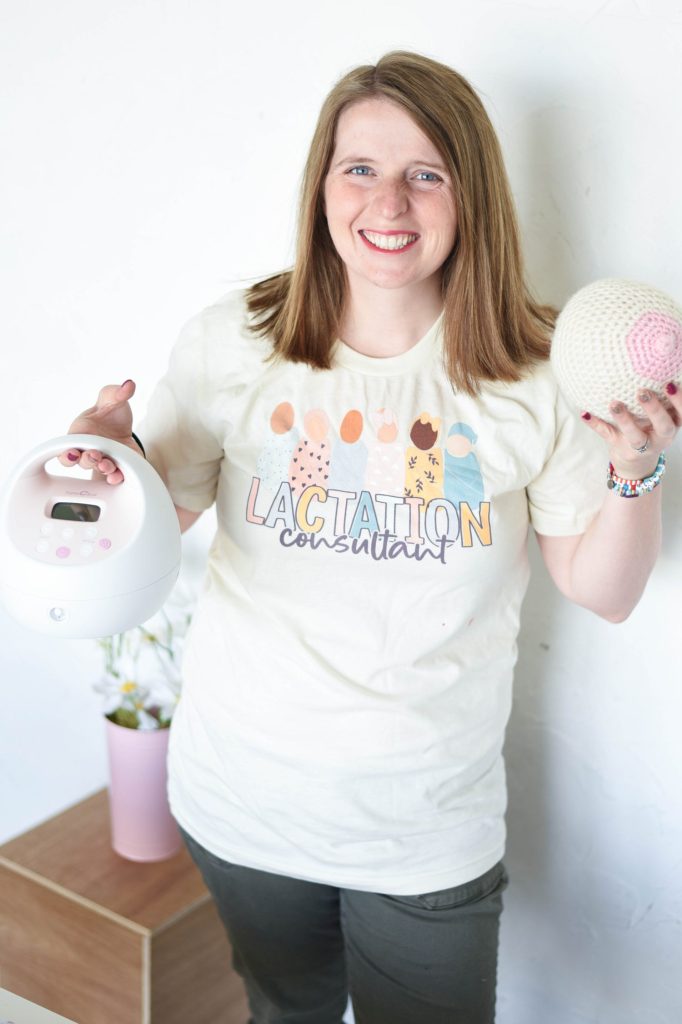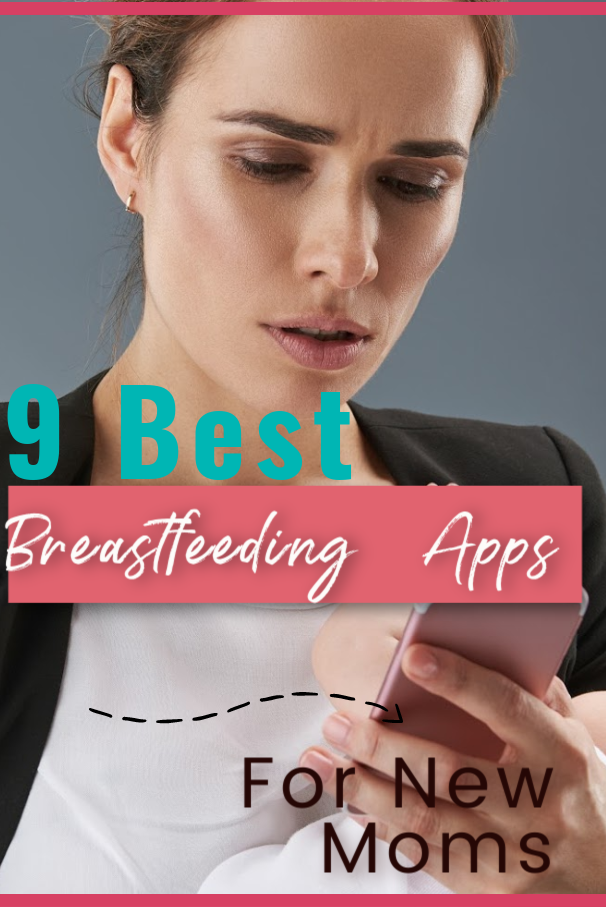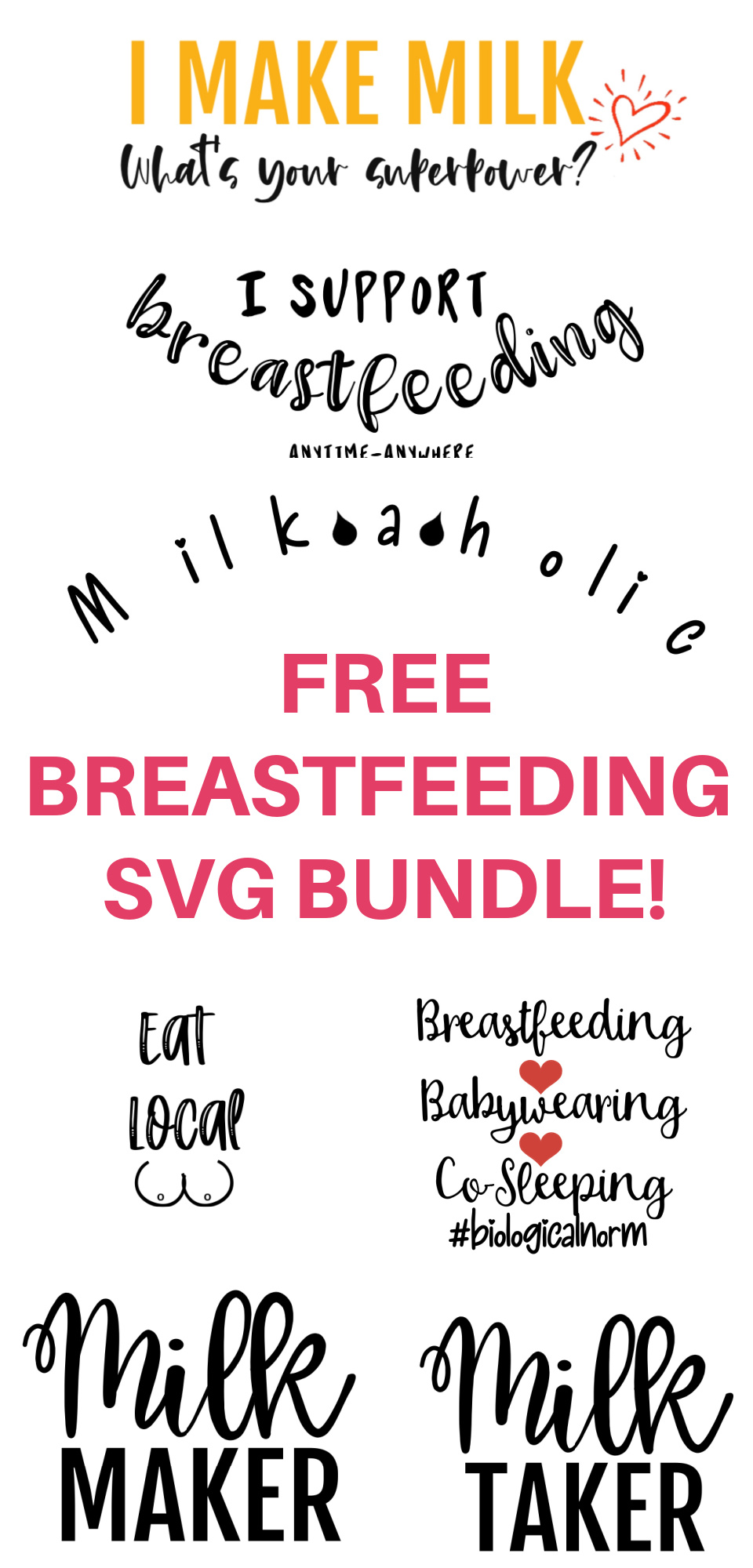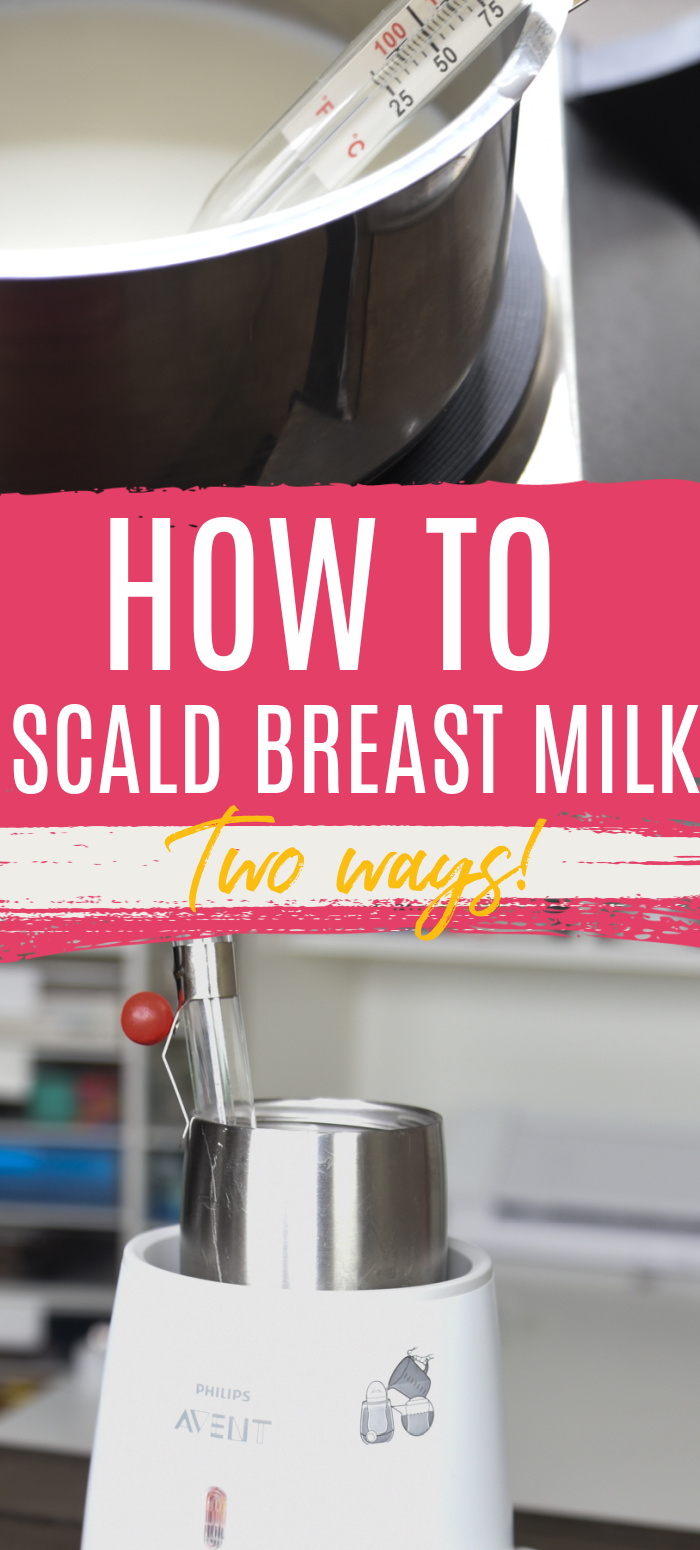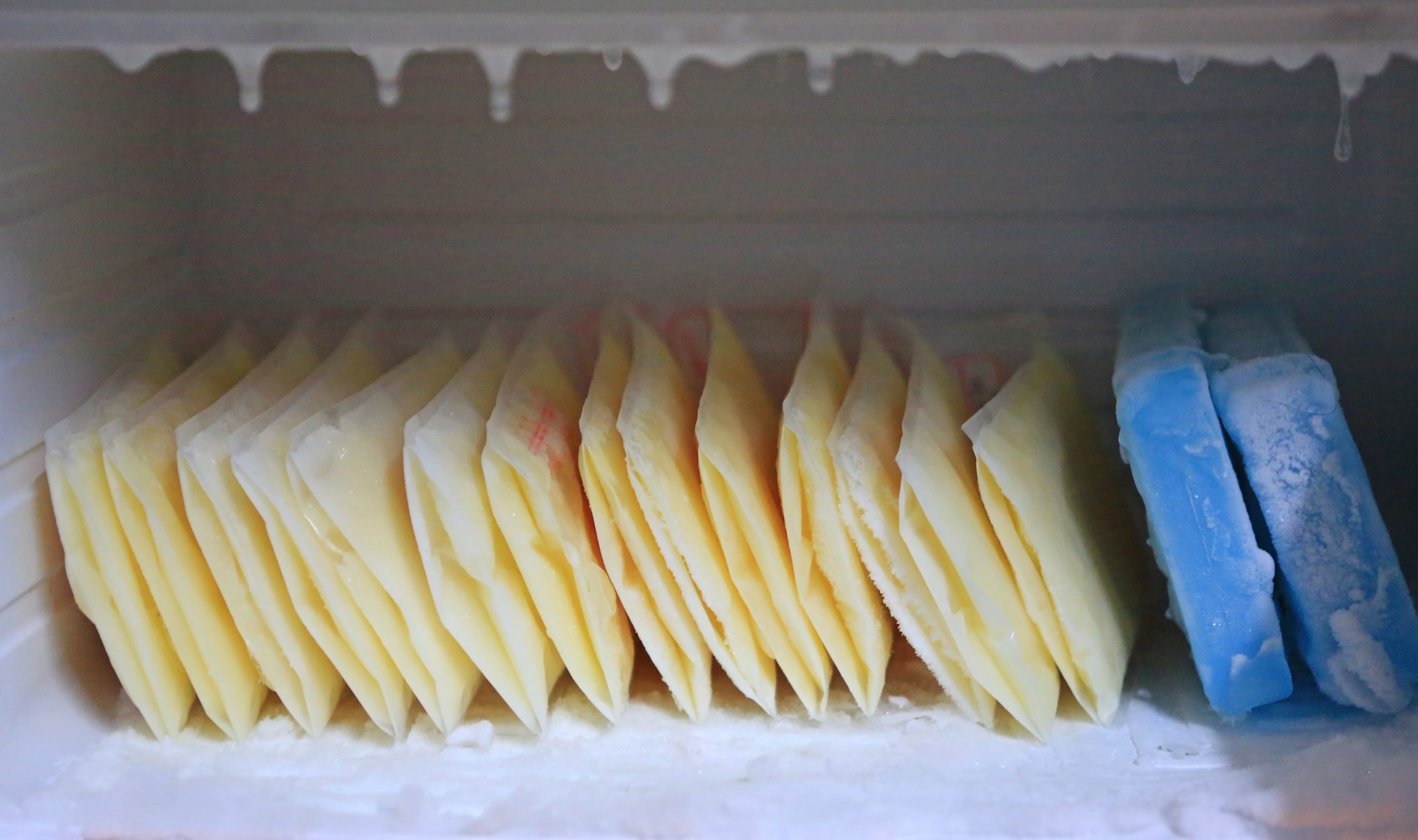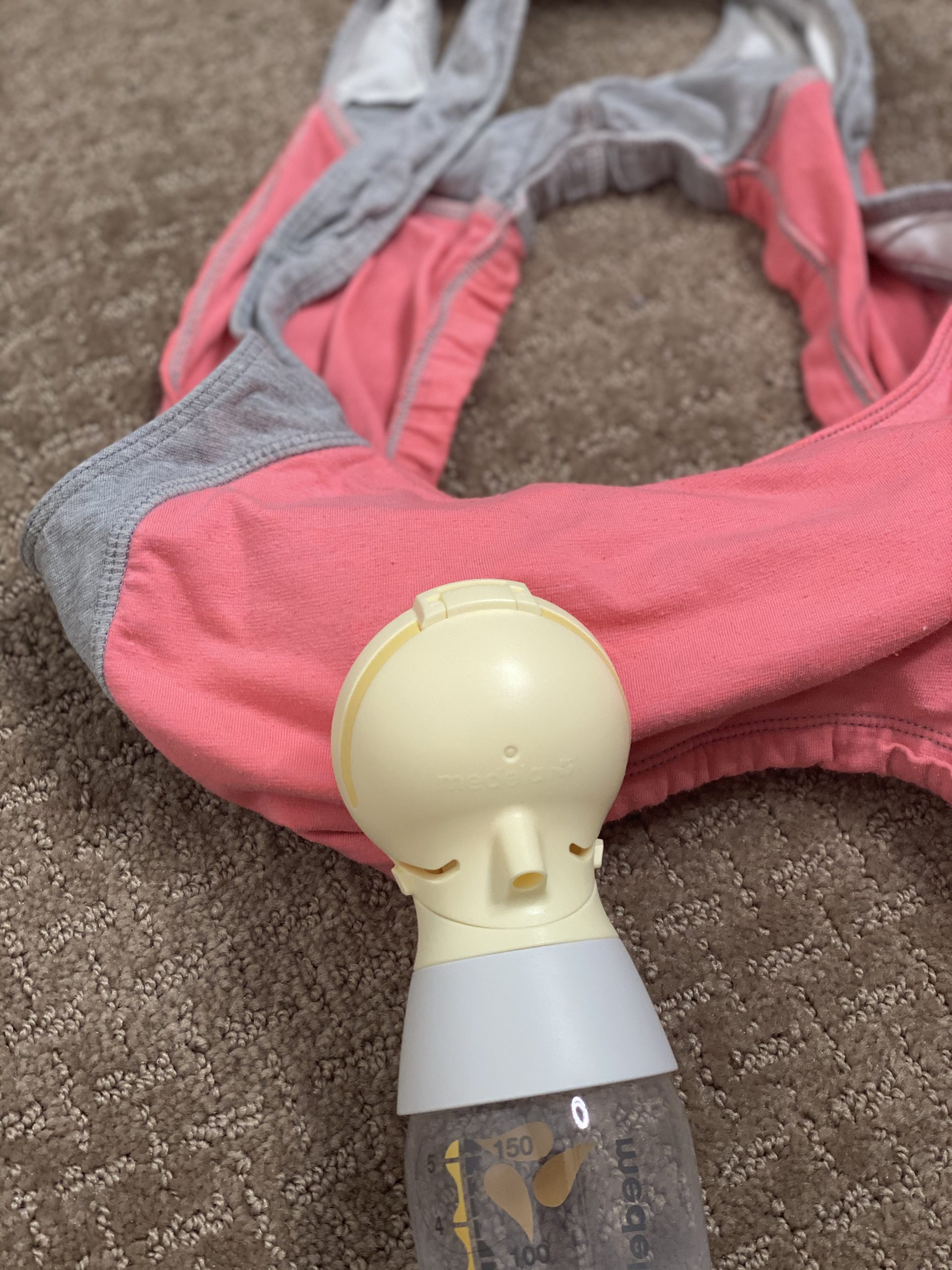Flat nipples are a variation in nipple shape where the nipple does not protrude significantly from the breast at rest, and it’s more flesh with the areola. Flat nipples are a variation of normal but many mothers worry about breastfeeding with flat nipples.
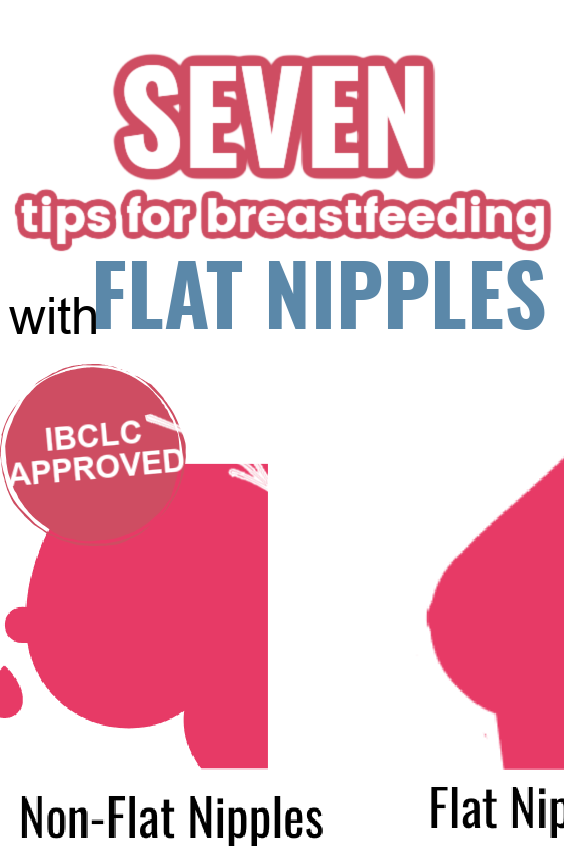
PREPARING NIPPLES FOR BREASTFEEDING WITH FLAT NIPPLES:
- Use laid-back positioning
- Work on getting a deep latch with baby getting a wide, open mouth and latching on the nipple and areola – not just the nipple
- Consider gently stimulating the nipple before nursing to ever the nipple
- Look into supple cups to encourage nipple protrusion
- Work with an IBCLC for your specific situation
As an International Board Certified Lactation Consultant (IBCLC), I often work with moms who have flat nipples and help them navigate their breastfeeding journey successfully. In this article, I will explain what flat nipples are, why they are not necessarily a problem, and provide tips for successful breastfeeding.
Let’s start with a graphic I created showing the difference between flat nipples and a more “typical” appearance. Some mothers may not see any of their nipple extending from the breast or even that they are more actually inverted (turned inward – and that’s an issue for another article).
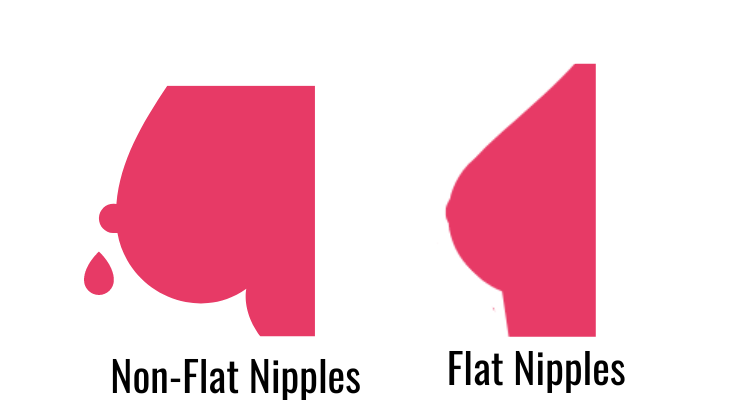
Firstly, it’s important to understand that the ability to breastfeed is determined by the structure of the breast, not the nipple. The baby latches onto the nipple and areola – not just the nipple – and you can successfully nurse even if the nipples are flat. It can make it trickier in some situations to engage your baby’s sucking reflux, but if you can get your baby to achieve a deep latch, it makes be enough to evert the nipples.
The good news is, I find that many mothers who have flat nipples naturally start to evert the longer they nurse or with subsequent pregnancies.
Here are some more breastfeeding tips for flat that might help, however, I would suggest signing up for Fuss-Free Foundations to get even more detailed advice on latching and positioning. If you are having a hard time to latch your baby, here are some reasons your newborn won’t latch.
Breastfeeding Help for Flat Nipples
1 – Seek Professional Support:
Consult with an IBCLC to navigate your specific situation. They can provide you with personalized advice and support to help you successfully breastfeed with flat nipples. My team of IBCLCS is ready to support you with flat nipples – you can book a virtual consult here.
2 – Breastfeeding Positions:
Experiment with different breastfeeding positions to find one that is comfortable and allows your baby to latch deeply. I prefer the laid-back nursing position or the koala position. Some moms find that side lying to be beneficial as well.
3 – Relieve Engorgement
If you are experiencing engorgement, this can cause normally protuding nipples to become flattened. With this engorgement, your breasts will likely be extra firm, which can make it even more difficult for your baby to latch on to any breast tissue.
Reverse pressure softening or gentle hand expression can help to relieve enough of the pressure for engorgement to help your nipples and breasts be soft enough to latch on. Laid-back nursing may also be beneficial for relieving engorgement and drawing away extra fluid from the breast.
Lymphatic breast massage can also be really helpful. I share some great techniques for lymphatic breast massage in the resource library for Fuss-Free First Year, so be sure to sign up to get access to that (and many other) resources.
4 – Nipple Stimulation:
Before breastfeeding, gently massage the nipples or use a breast pump to stimulate them. This can help draw out the nipple and make it easier for your baby to latch. You can do this by placing your nipple between your index finger and thumb and gently stimulating them.
Honestly, I find this to be one of the best tools for working with flat nipples.
5 – Supple Cups:
Supple cups are little silicone cups that you can wear before you start a breastfeeding session. They can work to gently pull out the nipple for easier latching. You gently squeeze the cup before placing it over the nipple, and then it suctions to the breast.
You should remove these immediately before nursing. Typically you can start by wearing them for 20-30 minutes at a time and increasing duration of time if you can handle it. If there is any pain or discomfort associated with these, I would discontinue use.
6 – Breast Pumping:
Some mothers choose to use a breast pump to evert their nipples before breastfeeding. This can cause some added stress to nursing sessions, but it works for some moms. I would only pump for one minute or so – and a quality hand pump can be a great option.
7 – Nipple Shields:
Nipple shields are thin, flexible covers that are placed over the nipple during breastfeeding. They can help draw out the nipple and make latching easier for your baby. However, it is important to use nipple shields under the guidance of a lactation consultant, as they can sometimes cause other issues if not used correctly.
I am not someone to jump to a nipple shield right away with flat nipples, especially without optimizing latching and positioning techniques. Nipple shields have their place, but I don’t believe that they should be the first stop when navigating flat nipples.
It’s important to remember that every breastfeeding journey is unique, and what works for one person may not work for another. Be patient and give yourself grace as you navigate this new experience. With perseverance and the right support, you can successfully breastfeed your baby, even with flat nipples.

